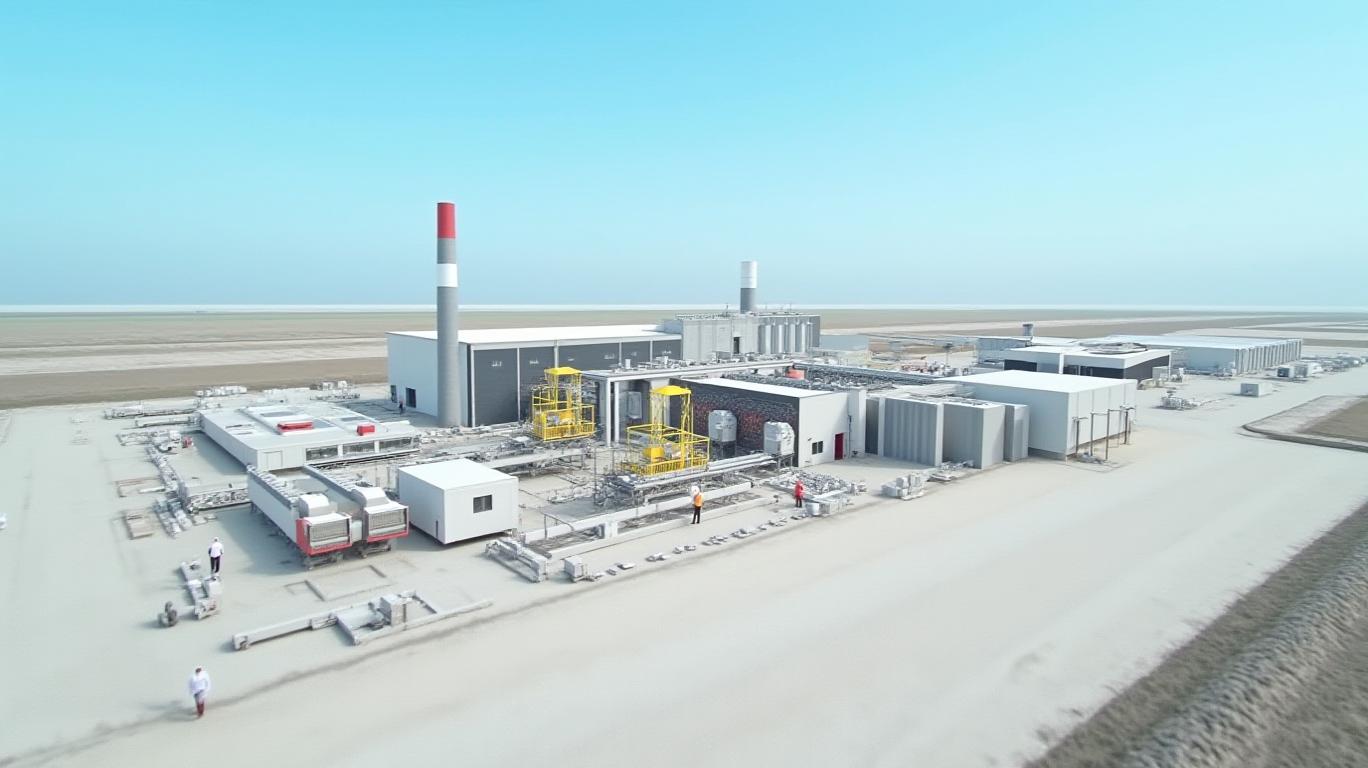Quaker Houghton's Q1 2025 Earnings: Navigating Headwinds with Strategic Resolve
Quaker Houghton (NYSE: KWR), a global leader in industrial process fluids, delivered its Q1 2025 earnings report on May 1, 2025, revealing a challenging start to the year amid macroeconomic pressures and geopolitical uncertainties. While the company’s financials reflect a contraction in sales and profitability, its strategic acquisitions and cost discipline suggest a path toward stabilization. Below is an in-depth analysis of the quarter’s results, operational dynamics, and implications for investors.
Financial Performance: A Mixed Start
Quaker Houghton reported a 6% year-over-year decline in net sales to $442.9 million, driven by three key factors:
1. 3% drop in sales volumes, stemming from soft demand in the Americas and EMEA regions.
2. 3% negative impact from foreign currency translation, particularly in Europe and Asia.
3. A 1% decline in selling prices and product mix, partially offset by 1% growth from recent acquisitions.

The net income tumbled to $12.9 million (or $0.73 per share) from $35.2 million (or $1.95 per share) in Q1 2024, while non-GAAP net income fell to $28.0 million ($1.58 per share) from $37.7 million ($2.09 per share). Adjusted EBITDA also dropped 17% to $69.0 million, underscoring margin pressures from lower sales and rising costs.
Regional Segment Analysis: Challenges Across the Board
All three geographic segments reported sales declines, though the Asia/Pacific region fared better than its peers:
- Americas: Sales fell 7% to $213.7 million, with weaker volumes (-3%) and currency headwinds (-4%) offsetting no contribution from acquisitions. Operating earnings dropped to $58.5 million from $66.8 million.
- EMEA: Sales declined 7% to $129.3 million, impacted by volume declines (-6%), pricing pressures (-1%), and currency effects (-3%). Operating earnings fell to $23.4 million.
- Asia/Pacific: Sales dropped 2% to $99.9 million, with volume growth (+1%) and acquisitions (+3%) barely offsetting price/mix declines (-3%) and currency issues (-2%). Operating earnings fell to $25.9 million.
Strategic Acquisitions: A Hedge Against Uncertainty
Despite the top-line struggles, Quaker Houghton emphasized its 2025 acquisition spree as a long-term growth lever:
- Dipsol Chemicals Co., Ltd. (Japan): Acquired for $155.2 million, this deal adds $82 million in annual revenue and strengthens its position in automotive and industrial markets.
- Natech, Ltd. (UK) and Chemical Solutions & Innovations (Pty) Ltd. (South Africa): Smaller acquisitions to bolster regional capabilities and market reach.
These moves align with the company’s “local for local” strategy, aiming to reduce tariff impacts and improve supply chain resilience. However, the benefits of these acquisitions remain to be seen in future quarters, as Q1 results suggest they contributed minimally to top-line growth.
Liquidity and Debt: A Balancing Act
Quaker Houghton’s liquidity position raised some concerns:
- Operating cash flow turned negative ($3.1 million in Q1 2025 vs. $27.2 million in 2024), driven by lower profitability and working capital outflows.
- Total gross debt rose to $737 million, with net debt at ~$550.8 million. The leverage ratio (net debt / trailing 12-month adjusted EBITDA) stands at 1.9x, a manageable level but one that requires cautious debt management as earnings recover.
Risks and Forward Guidance: Caution Ahead
Management highlighted several risks:
- Global economic softness: Tariffs, inflation, and high interest rates continue to dampen demand.
- Geopolitical tensions: Conflicts in Ukraine and the Middle East pose supply chain and operational risks.
- Regulatory and cyber risks: Emphasized in SEC filings as potential disruptors.
The company expects 2025 results to remain in line with 2024, relying on cost optimization and strategic acquisitions. However, near-term visibility is limited, and investors should brace for volatility.
Conclusion: A Stock for the Long Game?
Quaker Houghton’s Q1 results underscore the challenges facing industrial chemical companies in a weak macroeconomic environment. With sales down 6%, net income halved, and operating cash flow negative, the quarter was disappointing. However, the strategic acquisitions and focus on cost discipline provide a foundation for recovery once demand stabilizes.
Key data points to watch:
- Adjusted EBITDA margin recovery: A 17% decline in Q1 suggests room for improvement through cost cuts and higher volumes.
- Acquisition synergies: Dipsol alone added $82 million in revenue in 2024, and its full-year contribution in 2025 could boost sales.
- Leverage ratio: At 1.9x, the company has flexibility but must avoid further debt accumulation.
For investors, KWR is a hold with a cautiously optimistic long-term outlook. While near-term risks remain elevated, the company’s global footprint and strategic moves position it to capitalize on eventual demand recovery. However, the stock’s performance will hinge on macroeconomic stability and the execution of its growth initiatives.
Final Verdict: Quaker Houghton’s Q1 results reflect short-term struggles but highlight resilience through strategic moves. Investors should prioritize patience and monitor debt levels and acquisition integration closely.


_a26960071749827470514.jpeg)







